
Filter News
Area of Research
- Advanced Manufacturing (2)
- Biology and Environment (18)
- Building Technologies (3)
- Computational Engineering (1)
- Computer Science (2)
- Energy Science (33)
- Fusion and Fission (2)
- Fusion Energy (5)
- Isotopes (3)
- Materials (11)
- Materials for Computing (1)
- Mathematics (1)
- National Security (2)
- Neutron Science (23)
- Nuclear Science and Technology (11)
- Nuclear Systems Modeling, Simulation and Validation (1)
- Quantum information Science (1)
- Supercomputing (6)
News Type
News Topics
- (-) Buildings (21)
- (-) Clean Water (14)
- (-) Cybersecurity (3)
- (-) Environment (48)
- (-) Hydropower (6)
- (-) Isotopes (5)
- (-) ITER (3)
- (-) Neutron Science (27)
- (-) Nuclear Energy (19)
- (-) Physics (4)
- (-) Space Exploration (10)
- 3-D Printing/Advanced Manufacturing (34)
- Advanced Reactors (13)
- Artificial Intelligence (16)
- Big Data (17)
- Bioenergy (17)
- Biology (21)
- Biomedical (11)
- Biotechnology (4)
- Chemical Sciences (13)
- Composites (11)
- Computer Science (42)
- Coronavirus (11)
- Critical Materials (12)
- Emergency (1)
- Energy Storage (32)
- Exascale Computing (1)
- Fossil Energy (1)
- Frontier (1)
- Fusion (9)
- Grid (22)
- High-Performance Computing (12)
- Irradiation (2)
- Machine Learning (14)
- Materials (36)
- Materials Science (34)
- Mathematics (3)
- Mercury (3)
- Microscopy (11)
- Molten Salt (5)
- Nanotechnology (12)
- National Security (3)
- Partnerships (2)
- Polymers (10)
- Quantum Computing (5)
- Quantum Science (12)
- Security (1)
- Simulation (9)
- Statistics (1)
- Summit (8)
- Transportation (36)
Media Contacts

Although more than 92,000 dams populate the country, the vast majority — about 89,000 — do not generate electricity through hydropower.

Scientists are using Oak Ridge National Laboratory’s Multicharged Ion Research Facility to simulate the cosmic origin of X-ray emissions resulting when highly charged ions collide with neutral atoms and molecules, such as helium and gaseous hydrogen.

Oak Ridge National Laboratory is debuting a small satellite ground station that uses high-performance computing to support automated detection of changes to Earth’s landscape.
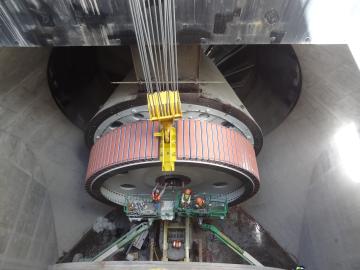
A new Department of Energy report produced by Oak Ridge National Laboratory identifies several supply chain must-haves in maintaining the pivotal role hydropower will play in decarbonizing the nation’s grid.
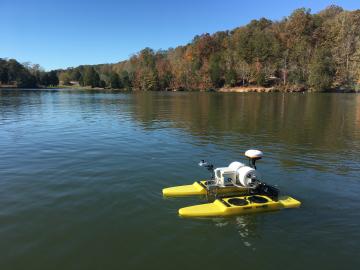
Measuring water quality throughout river networks with precision, speed and at lower cost than traditional methods is now possible with AquaBOT, an aquatic drone developed by Oak Ridge National Laboratory.
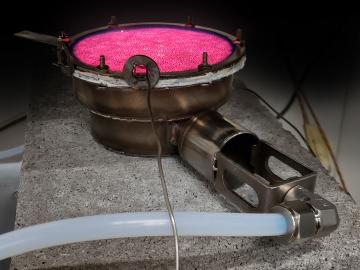
A prototype cooking appliance developed by Oak Ridge National Laboratory uses a 50% blend of hydrogen and natural gas, offering an alternative to safely reduce emissions that contribute to the nation’s carbon footprint.
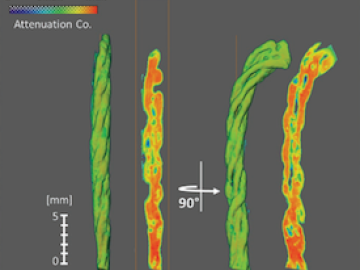
Textile engineering researchers from North Carolina State University used neutrons at Oak Ridge National Laboratory to identify a special wicking mechanism in a type of cotton yarn that allows the fibers to control the flow of liquid across certain strands.
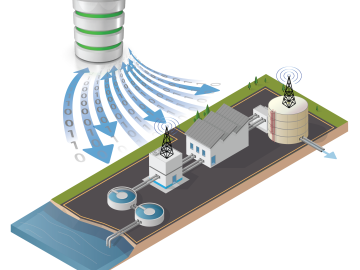
Oak Ridge National Laboratory scientists worked with the Colorado School of Mines and Baylor University to develop and test control methods for autonomous water treatment plants that use less energy and generate less waste.

To study how space radiation affects materials for spacecraft and satellites, Oak Ridge National Laboratory scientists sent samples to the International Space Station. The results will inform design of radiation-resistant magnetic and electronic systems.
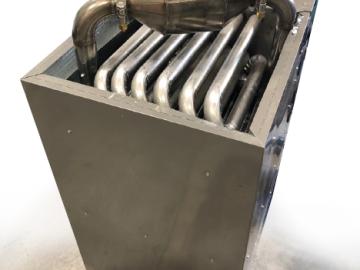
Oak Ridge National Laboratory researchers have developed a novel solution to reduce the environmental impact of natural gas-condensing furnaces commonly used in U.S. homes.


